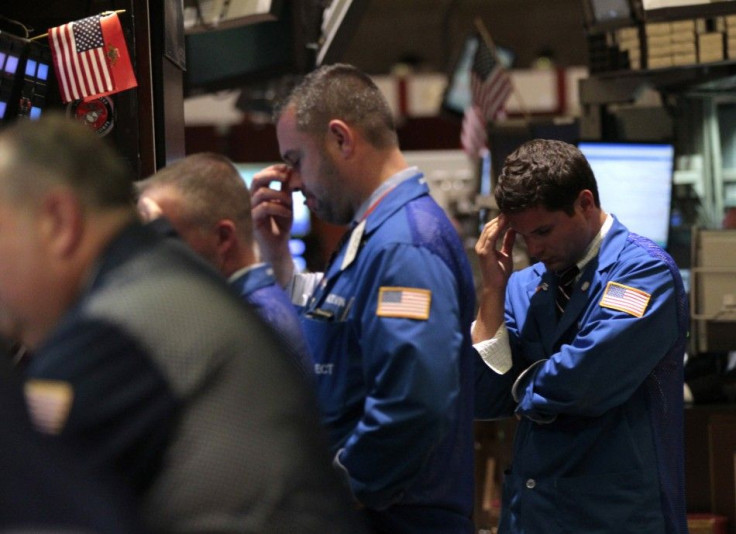U.S. Stocks: Is the Dow’s Pullback a Buying Opportunity?
ANALYSIS

Talk about an unnerving week for U.S. investors: European leaders continue to press Greece on austerity measures, even as it readies an aid package to prevent contagion; combine that with a to-date tepid U.S. economic recovery, and that's more than enough to upset institutional investors.
The Dow Jones Industrial Average (DJIA) is on track to record a weekly decline of more than 800 points -- the worst weekly swoon in two years. But the important question for the typical investor is, where's the Dow likely to head in the next six months?
The market's bulls -- those who say the Dow is headed higher -- argue that despite the fact that the U.S. economy grew at a very low 1.0 percent tepid rate in the second quarter, private sector layoffs most likely have peaked, auto sales are still trending up, exports remain adequate and there are signs that corporations may be willing to deploy capital for new projects.
Conversely, the market's bears -- those who say the Dow will decline -- argue the substantially smaller U.S. workforce; stagnant income in many job classifications; an economy that's short about 11 million full-time jobs, at minimum; ongoing consternation known as Europe government bonds, or sovereign debt; and the U.S. Federal Reserve's status quo Operation Twist monetary policy still leave a U.S. economy that's short aggregate demand.
Let's do a condensed, cross-methodology analysis to see if we can arrive at an informed investment decision/conclusion regarding where the Dow is headed, near-term.
Technical Indicators: Bearish. The Dow is firmly below the 50-day (11,514) and 200-day (11,994) moving averages -- which is bearish. Further, the Dow is below key support at 10,700-10,760.
Fundamental Indicators: Bearish. The second-quarter earnings season turned out to be slightly better than expected. However, the U.S. economy, as measured by GDP, is growing at a very slow rate, and the U.S. Federal Reserve's latest Beige Book regional economic summary indicated that some regions are experiencing mixed or weakening activity. Initial jobless claims also remain above the psychologically significant 400,000 level.
Monetary Policy: Slightly Bullish. Despite two phases of quantitative easing (QE and QE2) by the U.S. Federal Reserve, inflation remains low, at the core level (which excludes food and energy prices). That relatively low inflation, combined with the output gap, means the Fed will at least continue to reinvest the proceeds of the second stage of its quantitative easing policy to help stimulate the economy, QE2, through at least the start of the fourth quarter, and perhaps for longer.
On the other hand, the Fed's new Operation Twist -- which substitutes the purchase of $400 billion in long-term debt in place of $400 billion purchases in short-term debt -- was deemed a status-quo move by institutional investors, in terms of credit availability, when the market wanted an expansion of credit.
Fiscal Policy: Bearish. The U.S. Congress, led by Tea Party-pressured Republican majority in the U.S. House, won the debt deal debate, and as a result Congress will implement austerity measures too soon. Deficit reduction and weeding-out needless programs are laudable goals, but reducing the deficit too fast -- especially if spending cuts affect the social safety net -- reduces demand, and could very well increase social problems.
What's more, it could lead to even higher social costs down the road. Also, the two parties are still bickering over the budget -- they have so far failed to reach an agreement on a stopgap funding bill for fiscal 2012, and if they don't next week, the risk exists -- yet again -- that the U.S. Government could be shut down, this time on/just after Oct. 1.
Credit Markets: Recovering, but still strained, with still too many small/medium-sized businesses arguing they're not getting the level of credit they need to expand operations. Home mortgage qualifications terms remain very high. Home mortgage rates, however, are at/near 50-year lows, at about 4.00 percent for home buyers with excellent credit.
However, as noted, Europe's sovereign debt situation remains clouded, and there could be more financial market ripples. Greece still needs to implement austerity measures; failure to do so could lead to the denial of aid from the International Monetary Fund (IMF), which could trigger a Greek default; if it occurs, it would trigger the third wave of the global financial crisis.
Conclusion: The view from here argues that the outlook for U.S. stocks and the U.S. stock market is Slightly Bearish for at least the next two months -- through late November.
Given the above technical and fundamental indicators, pull-backs in the Dow and S&P 500 are likely to occur. Underscoring, the current stock market is highly selective, and the bias is toward deploying capital only in those clear-winner stocks.
In sum, the market needs bullish U.S. economic data to support the Dow.
© Copyright IBTimes 2024. All rights reserved.





















